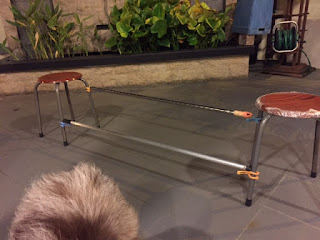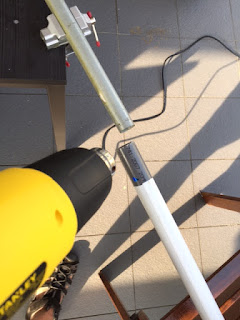Tick collars are great in keeping your dogs tick free, however, most will require your dogs to wear it 24 hours a day. The big concern with having your dog wear a collar 24x7 is that they may strangle themselves if it is caught on something.
A quick way to get around this is just do a cut on the collar, and leave a portion to hold it back.
I will use an old or expired tick collar to try various depth to determine the depth to cut before i make the cut on the new collar.
Another way that we can make it safe is to simply attached the tick collar to a break-away collar.
What i have done is to cut the buckle off the tick collar and use strings to tie it to the break-away collar.
Hope the tips will help keep things safe for your dogs....





















